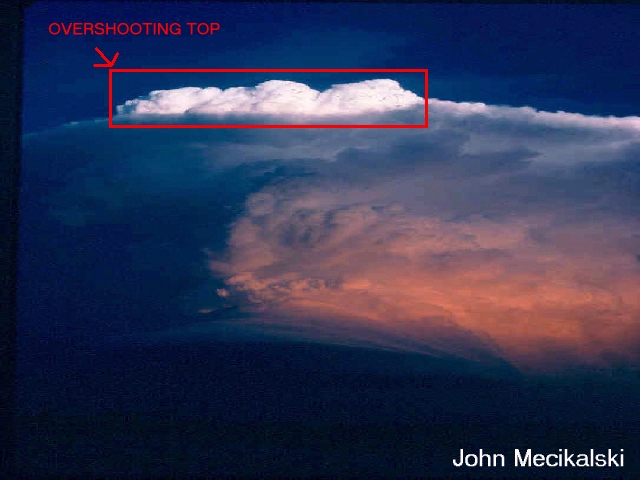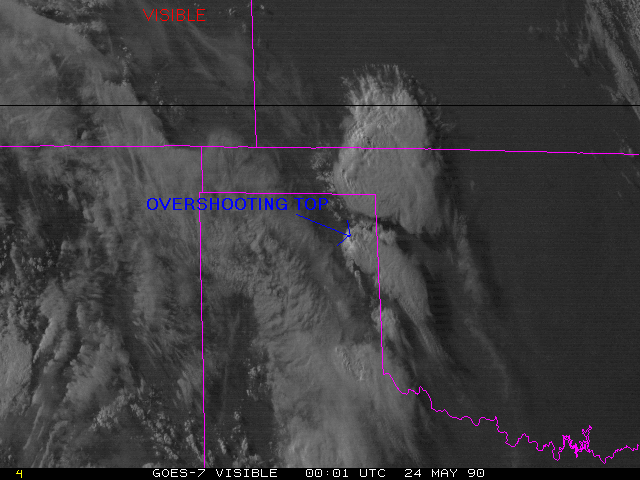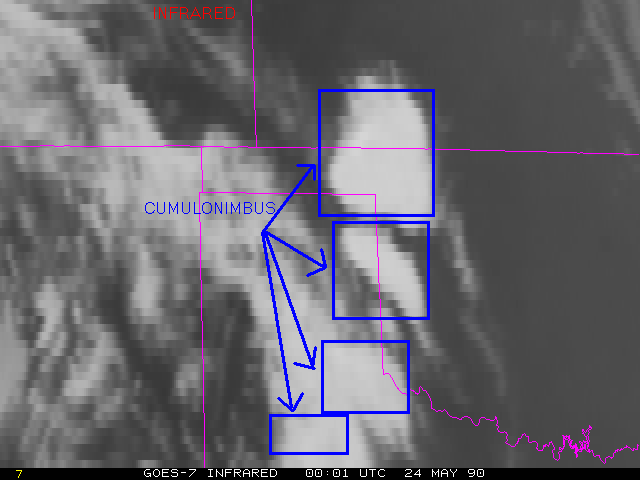




Cumulonimbus clouds form in moist atmospheres and are common in spring and summer. They often occur in the advance of a cold front. In summer they can form over mountains due to orographic lifting in combination with solar heating. Precipitation falls from these clouds and severe weather (lightning, hail, tornado, flash flood) is common. Cumulonimbus can be isolated storms or organized in groups. When cumulonimbus clouds form together in an organized system, the chance of severe weather increases.
 Cumulonimbus cloud from below |

Visible satellite image |

IR satellite image |
 |
|
Nimbostratus are layered clouds with low bases that produce precipitation and are usually formed by advection. Nimbostratus are often associated with the passage of warm fronts. Nimbostratus may quickly develop into a thunderstorm.

Continue to the next page
Go back to the previous page